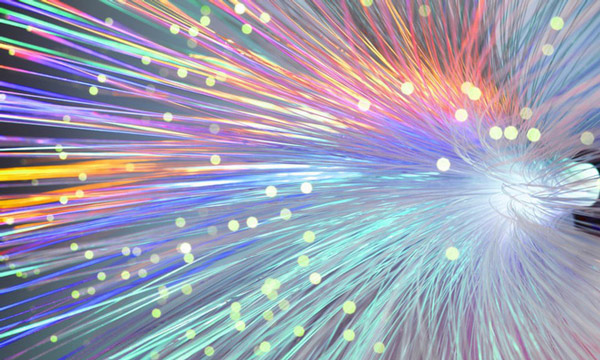New fiber optic technology allows signals to travel 100 times faster than current
According to a new study published in the journal Nature Communications, Australian scientists have created new fiber optic technology, allowing signal transmissions to be 100 times faster than the present.
Specifically, scientists have found a new way for fiber optic systems to transmit information by twisting light on the move to bring a lot of data in a single transmission.

Today's fiber optic cable, signal transmission with each beam of light (light waves that can run vertically or horizontally) is already quite high, completely surpassing the Internet on old copper wire technology. But, Australian researchers believe they can improve Internet speed even better.
Previously, US researchers created a fiber optic cable that could twist light. Following this study, Australian scientists have found a way to read the signal that lies in twisted light. They created a light wave detector that is as small as a human hair.
Professor Min Gu, co-author of the study, said they could produce a new chip, detect twisted light and display the content.
In particular, this new solution can be applied to existing fiber-optic systems, even Internet systems that run copper wires to speed up the network 100 times without replacement.
However, to realize and disseminate super-speed optical cable will need to go through a very long process of waiting for companies to accept, the carriers agree. As expected, users have to wait until 2040 to experience this system.
See more:
- Why is upload speed usually much slower than download speed?
- Map of 420 Internet cables, stretching 1.1 million kilometers on the seabed around the world
- The way that 5G will change Internet connection in your home
You should read it
- Computer connection: Light Peak optical cable
- The new fiber optic sensor is capable of transmitting data 100 times faster
- There was a super-speed fiber optic network of 5TB / sec
- How to Test Fiber Optic Cables
- Network access speed returns to normal after fiber optic breakdown
- AAG fiber optic cable has been repaired, international Internet is restored
- New technology speeds up data through optical fiber
- AAG marine fiber optic cable has a fifth incident in 2017
- What is fiber optic cable? What is the application of fiber optic network?
- As of October 6, the AAG fiber optic cable is completely repaired
- APG fiber optic cable has been repaired, Internet capacity goes to international recovery 100%
- Speed up Internet connection by VPN virtual private network solution
May be interested

This extension will help you know the feeling of web surfing when color blindness

Yahoo has returned to Yahoo Together chat application, invited to experience

Project Stream, playing every blockbuster game right on the Chrome browser, does not need a terrible configuration computer

List of Xiaomi smartphones to Android 8 Oreo and Android 9 Pie

Google Maps and misleading instructions make users want to 'go crazy'

Decoding 8 icons often appears on the iPhone screen but not everyone knows





 The new fiber optic sensor is capable of transmitting data 100 times faster
The new fiber optic sensor is capable of transmitting data 100 times faster How to Test Fiber Optic Cables
How to Test Fiber Optic Cables What is fiber optic cable? What is the application of fiber optic network?
What is fiber optic cable? What is the application of fiber optic network? APG fiber optic cable has been repaired, Internet capacity goes to international recovery 100%
APG fiber optic cable has been repaired, Internet capacity goes to international recovery 100% There was a super-speed fiber optic network of 5TB / sec
There was a super-speed fiber optic network of 5TB / sec Will the global Internet be broken if all of the undersea cable lines are attacked?
Will the global Internet be broken if all of the undersea cable lines are attacked?